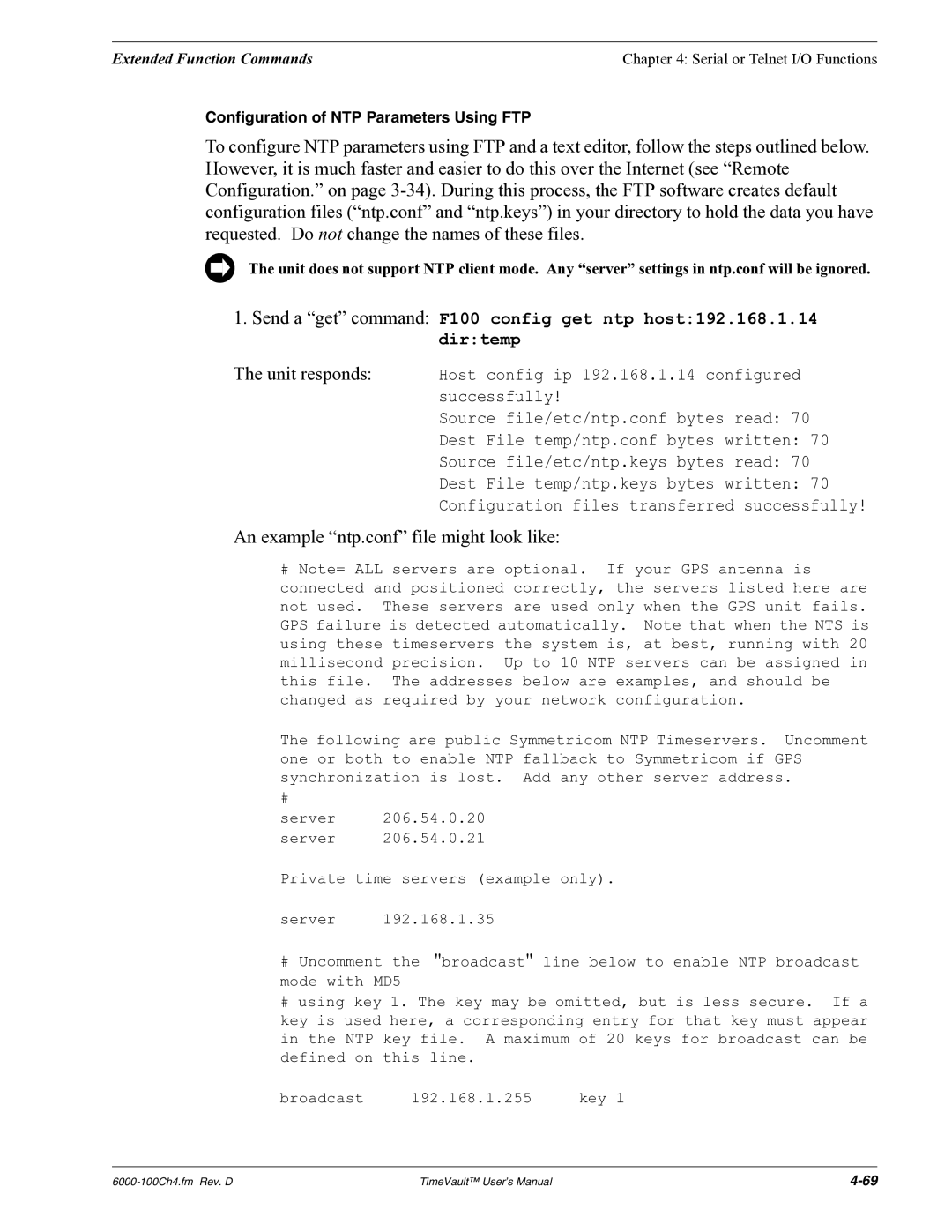
Extended Function Commands | Chapter 4: Serial or Telnet I/O Functions |
Configuration of NTP Parameters Using FTP
To configure NTP parameters using FTP and a text editor, follow the steps outlined below. However, it is much faster and easier to do this over the Internet (see “Remote Configuration.” on page
The unit does not support NTP client mode. Any “server” settings in ntp.conf will be ignored.
1.Send a “get” command: F100 config get ntp host:192.168.1.14 dir:temp
The unit responds: Host config ip 192.168.1.14 configured successfully!
Source file/etc/ntp.conf bytes read: 70
Dest File temp/ntp.conf bytes written: 70
Source file/etc/ntp.keys bytes read: 70
Dest File temp/ntp.keys bytes written: 70 Configuration files transferred successfully!
An example “ntp.conf” file might look like:
#Note= ALL servers are optional. If your GPS antenna is connected and positioned correctly, the servers listed here are not used. These servers are used only when the GPS unit fails. GPS failure is detected automatically. Note that when the NTS is using these timeservers the system is, at best, running with 20 millisecond precision. Up to 10 NTP servers can be assigned in this file. The addresses below are examples, and should be changed as required by your network configuration.
The following are public Symmetricom NTP Timeservers. Uncomment one or both to enable NTP fallback to Symmetricom if GPS synchronization is lost. Add any other server address.
#
server server
Private time servers (example only).
server 192.168.1.35
#Uncomment the "broadcast" line below to enable NTP broadcast mode with MD5
#using key 1. The key may be omitted, but is less secure. If a key is used here, a corresponding entry for that key must appear in the NTP key file. A maximum of 20 keys for broadcast can be defined on this line.
broadcast | 192.168.1.255 | key 1 |
TimeVault™ User’s Manual |
